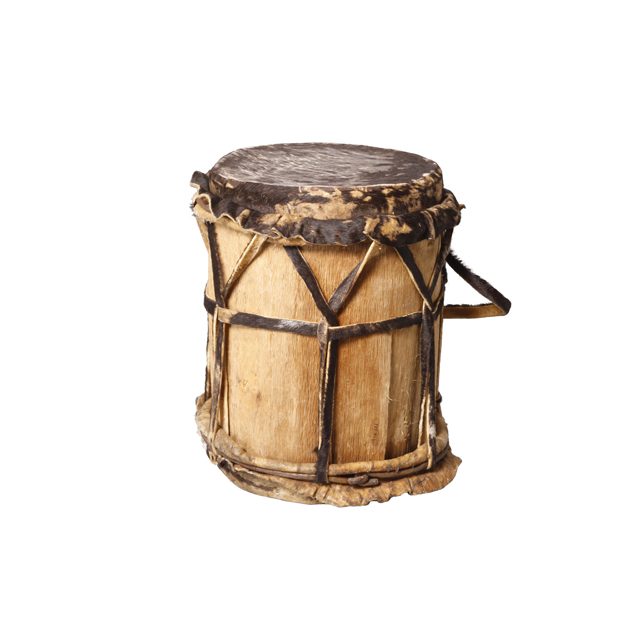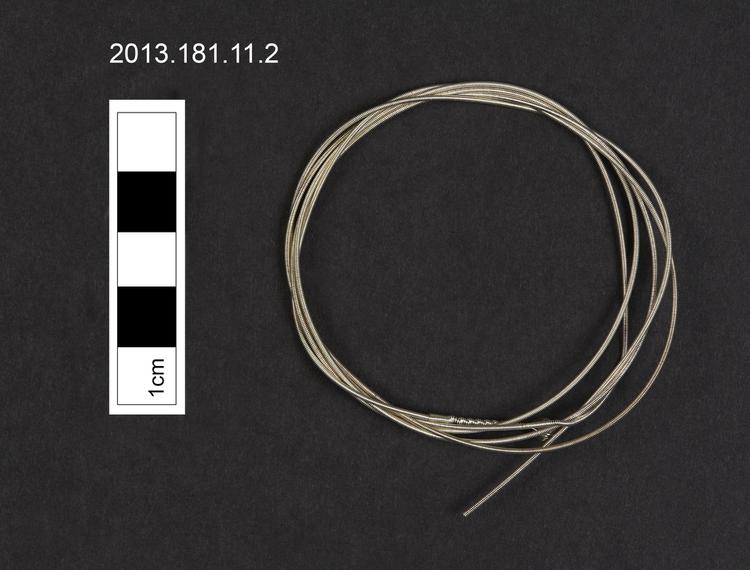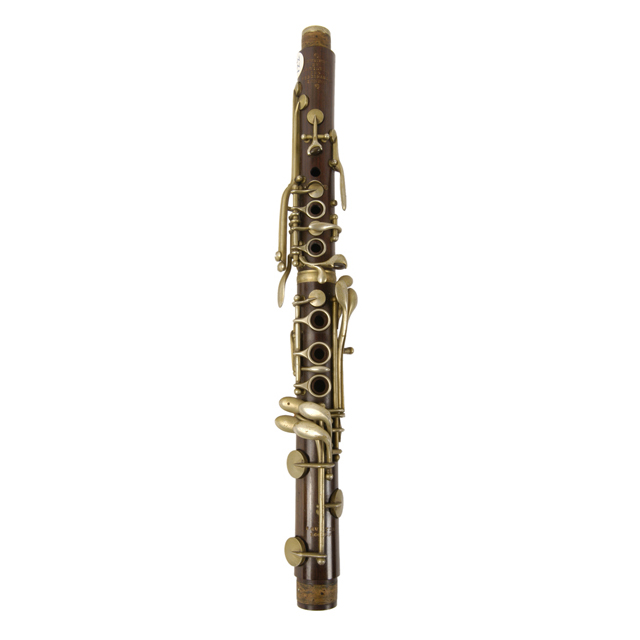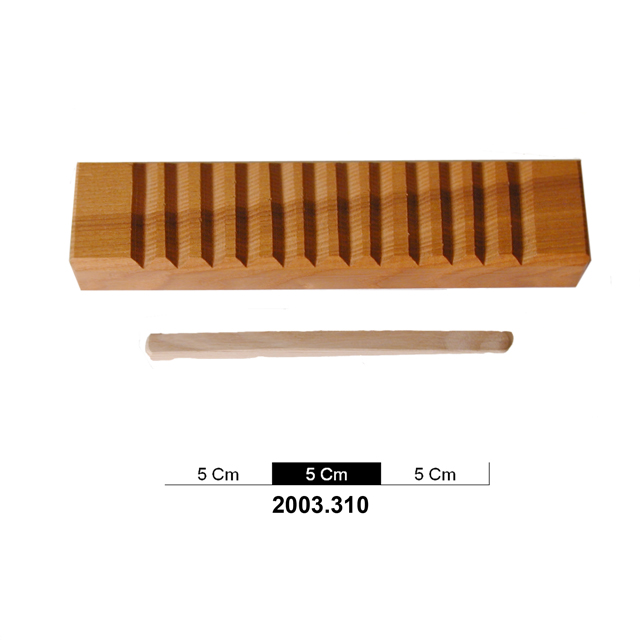
Tama, hourglass-shaped 'talking' drum, made by Malo Sonko (Mandinka speaker), Abene (village), Kasamance, Senegal. The waisted shell made of wood: wulakonduto lit. 'bush (wula) mango (konduto)' (Irvingia species, possibly Irvingia gabonensis). Mr Sonko seasoned the wood for two weeks after it was cut, and treated it with palm oil. The heads are of kid skin; lizard skin was used in the past but now this is becoming difficult to source.
The tama drum is mainly used by Wolof communities. The head is held under the left arm and is struck both with a stick, held in the right hand, and with the left hand. It is used for sabara and bala music. The imitation of speech pattern is made by changing the pitch by pressing the ropes on the drum with the forearm. Both heads are played and are not tuned differently. The tama is usually played with the Wolof sabar (sabaro – a goblet-shaped drum, played with a stick).


































































































































































































































































































































































































































































































































